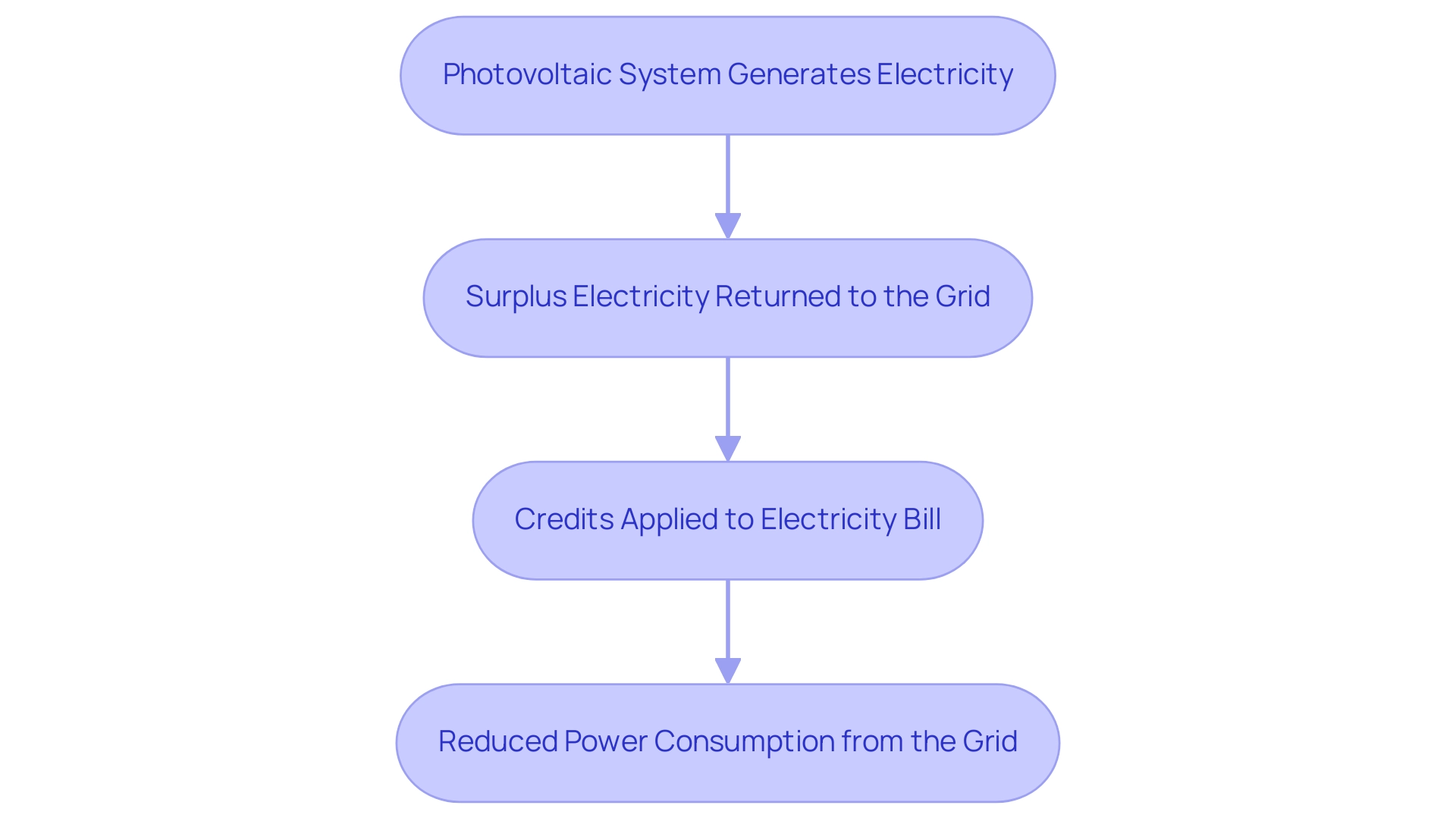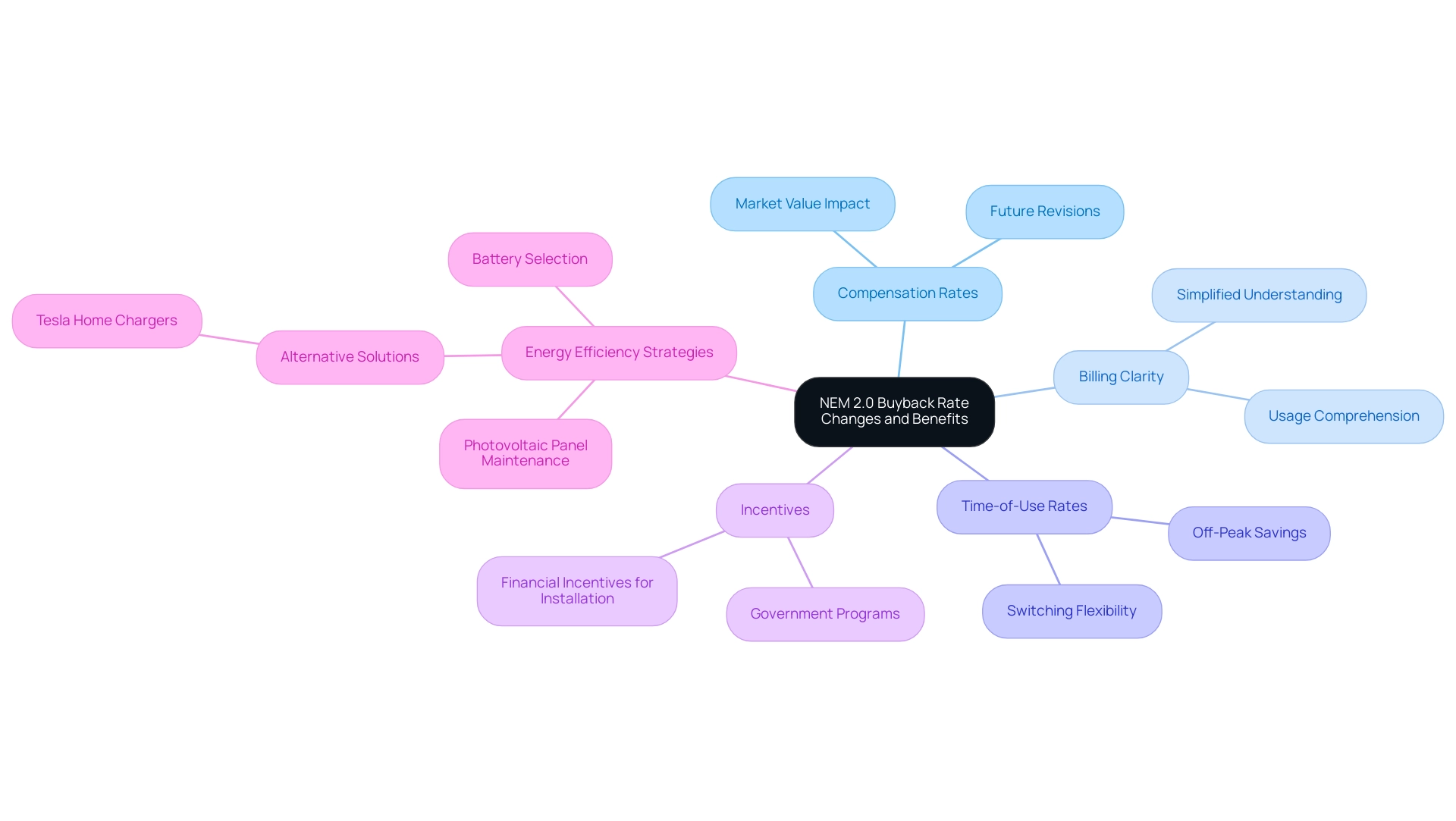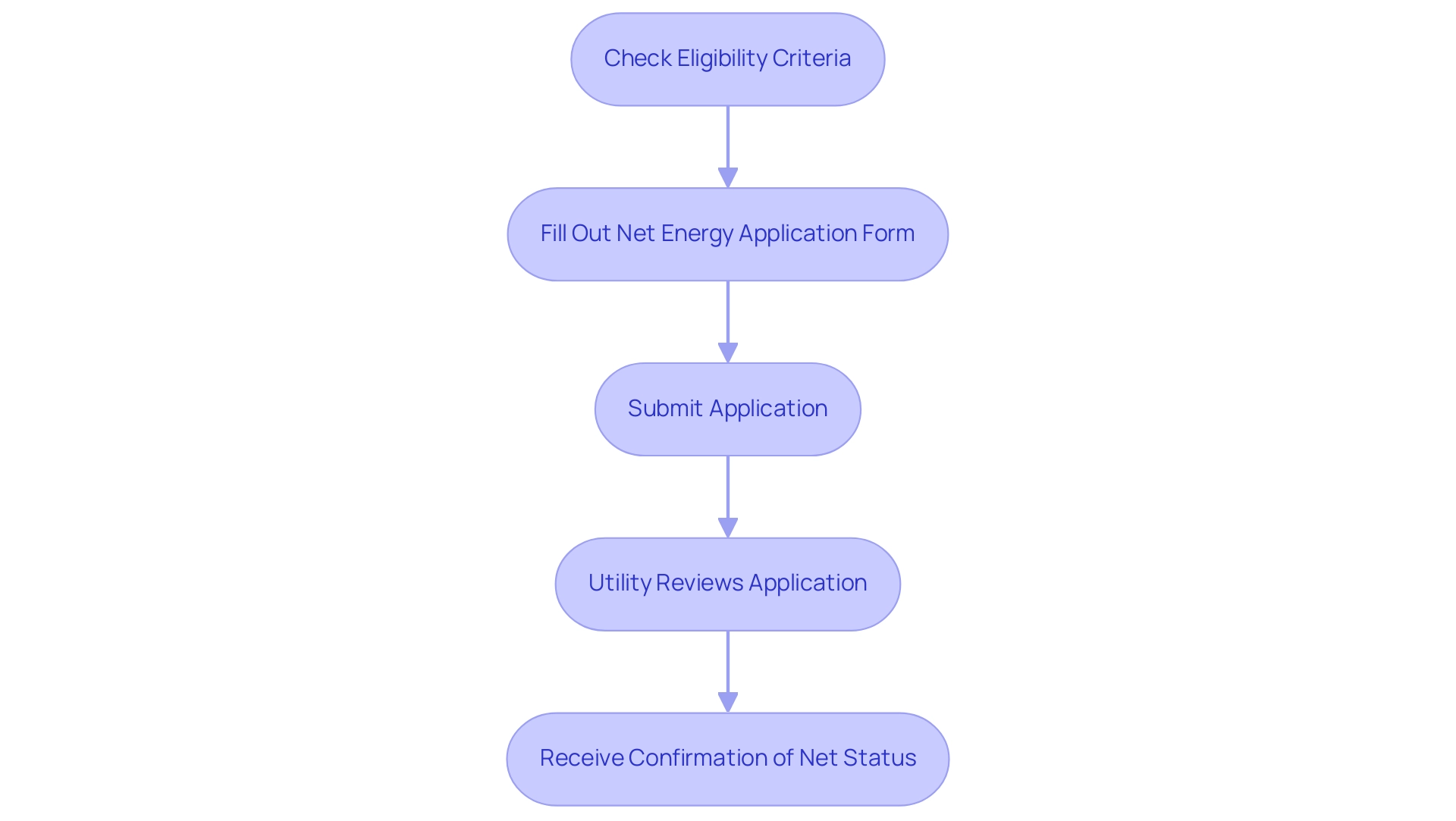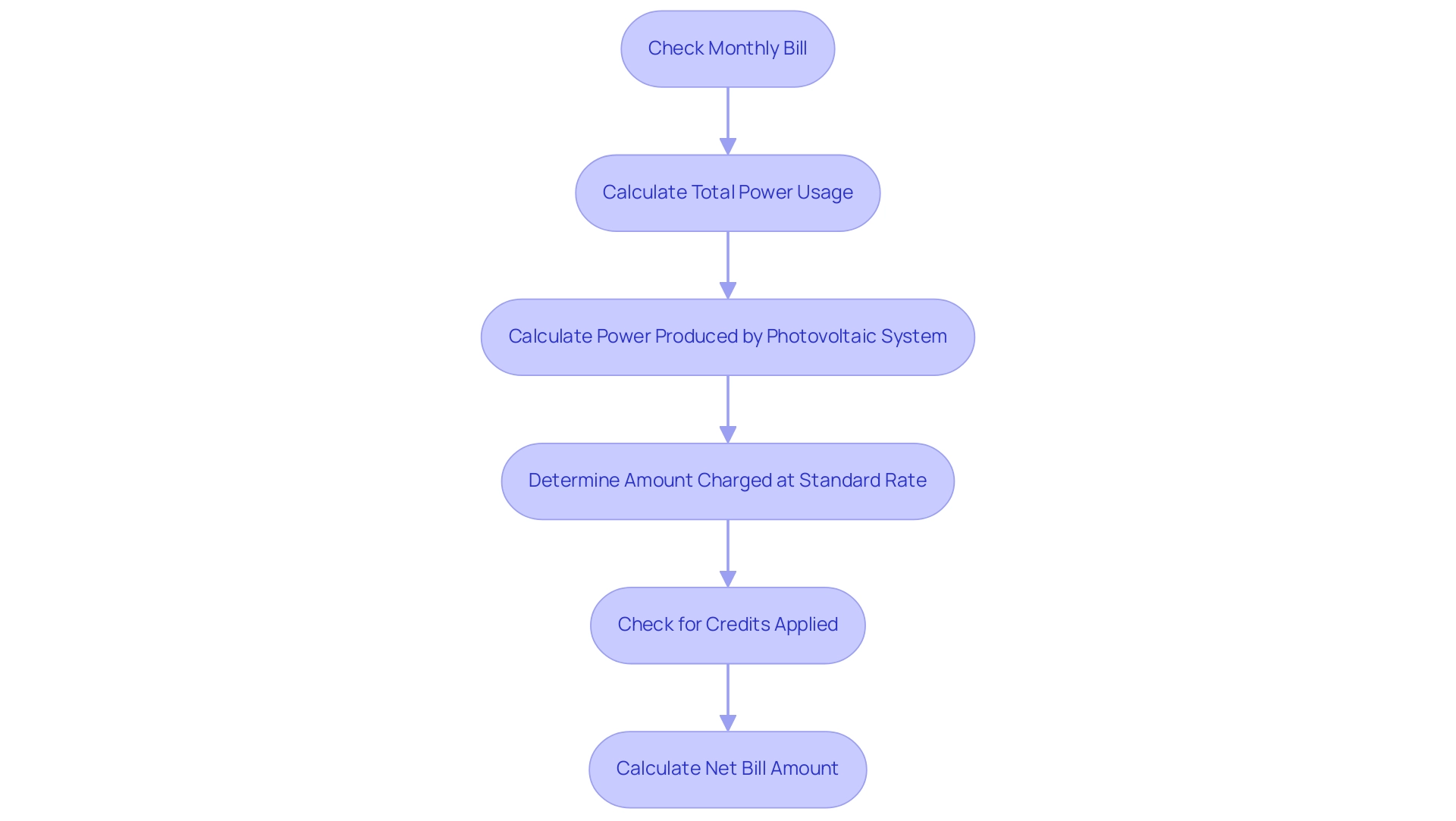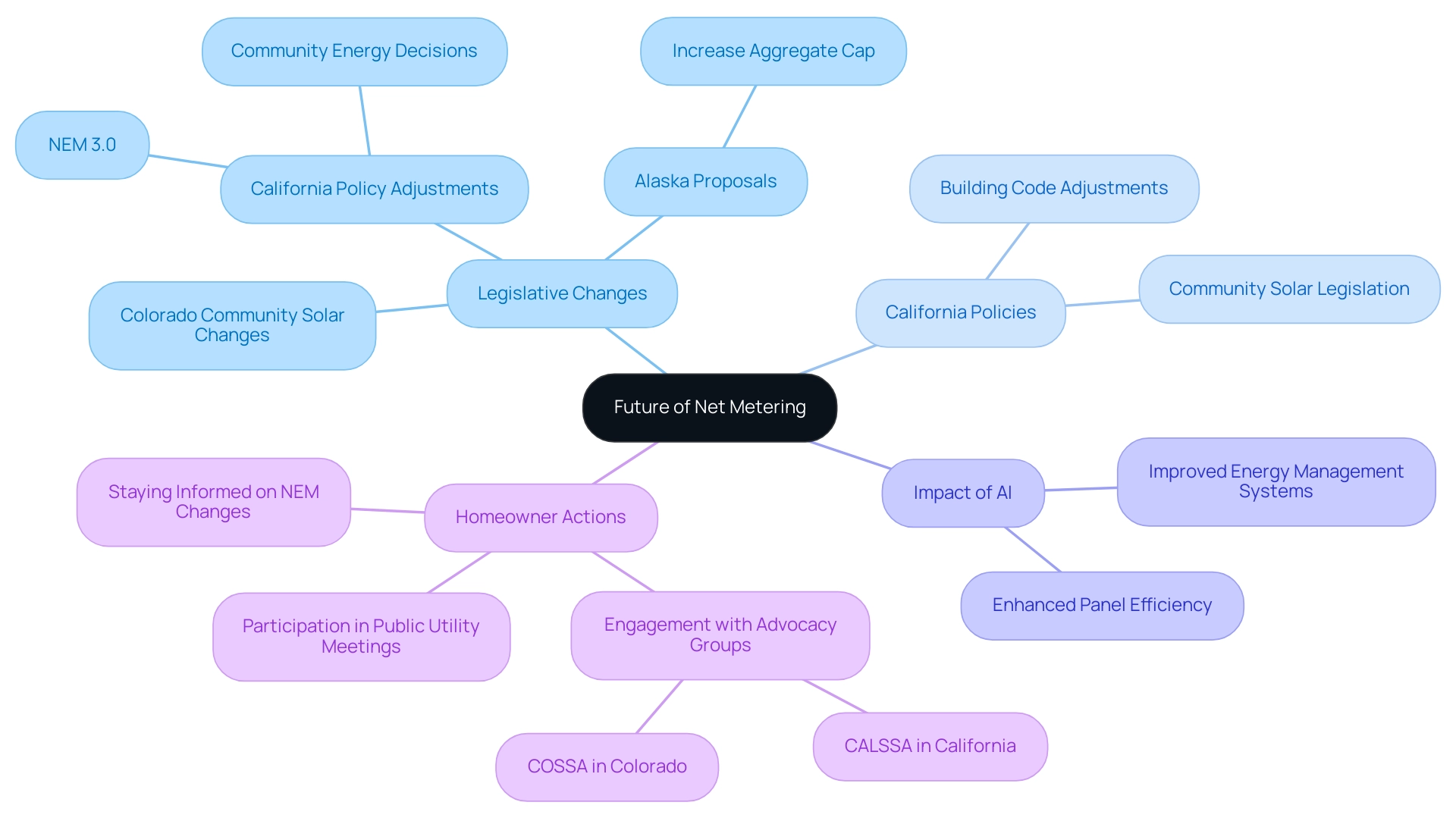Introduction
The world of solar energy is buzzing with excitement, and for homeowners, understanding net metering is key to unlocking its full potential. Imagine a system where the energy produced by solar panels not only powers your home but also earns you credits on your electricity bill—this is the magic of net metering.
As homeowners increasingly turn to renewable energy solutions, the benefits of net metering become even clearer, from reduced energy costs to contributing to a greener planet. With recent shifts in policies and frameworks like NEM 2.0, navigating the landscape of solar energy can feel overwhelming.
However, with the right information and a bit of guidance, homeowners can take charge of their energy consumption and savings, making informed decisions that enhance both their wallets and the environment.
Dive into the essentials of net metering, explore the latest legislative changes, and discover how to maximize the benefits of solar energy in your home.
What is Net Metering and How Does It Work?
Net metering resembles a cordial handshake between your photovoltaic panels and the utility grid, enabling residents to gain credits for any surplus electricity they generate. Here’s how it functions: when your power system produces more output than you require, that excess is returned to the grid. In exchange, you receive credits on your electricity bill, which can assist in reducing your power consumption from the grid during those times when your photovoltaic system isn’t quite keeping up, such as at night or on cloudy days.
This arrangement not only promotes the use of renewable resources but also makes this form of power a financially wise option for homeowners. In fact, despite a 33% decline in overall residential installed capacity compared to the same period in 2023, interest in renewable power sources remains strong. The community energy segment even saw a 12% year-over-year increase, particularly in states like Maine and Illinois, demonstrating that many are still reaping the benefits of net metering.
As Bianca Sloma, Vice President of Utility Solutions, highlights,
We have the knowledge and experience to help utilities support their electrification goals and customer needs. Our electrification initiative not only supports net billing but also improves customer experience by offering more choices for energy savings and sustainability. With net metering, you not only contribute to a greener planet but also gain financial rewards such as reduced electricity bills, increased property value, and potential tax incentives, making your renewable energy investment even more worthwhile.
Moreover, water heaters powered by sunlight, which can heat water to temperatures as high as 400 degrees Fahrenheit, offer significant savings on utility bills and lower carbon emissions. Their long-term reliability and the growing trend of adoption in the market make embracing renewable solutions a win-win for both your wallet and the environment.
Understanding the NEM 2.0 Buyback Rate: Key Changes and Benefits
Under the NEM 2.0 framework, homeowners are experiencing significant shifts concerning the NEM 2.0 buyback rate for excess solar power. One notable change is that the compensation rate for power sent back to the grid has often dipped below previous levels, aligning with the current market value of electricity. For example, the peak kW demand charge is determined by the highest 30-minute interval of electricity consumption during on-peak hours, affecting your overall costs.
But don’t worry—NEM 2.0 also brings some advantages! One of the standout features is improved clarity in billing, making it simpler for you to comprehend your usage and costs. Additionally, WPPI has stated its intention to revise all municipal utilities’ parallel generation NEM 2.0 buyback rate, which could further influence compensation structures.
There’s also the exciting potential for incentives through time-of-use (TOU) rates. By strategically utilizing power during off-peak hours, when rates are typically lower, you can really maximize your savings. Additionally, comprehending how photovoltaic panels function and the ideal battery selections for home power storage will assist you in making informed choices concerning your setup.
Additionally, investigating alternatives such as Tesla home chargers can improve your power efficiency, while governmental panel programs may offer financial incentives for installation. Regular maintenance and cleaning services for photovoltaic panels also play a crucial role in ensuring long-term performance and efficiency. By staying informed on these changes and adjusting your energy habits accordingly, you can take full advantage of your energy system, keep those electricity bills in check, and contribute to a more sustainable future!
How to Apply for Net Metering: Eligibility and Application Process
When applying for net measurement under the NEM 2.0 buyback rate, it’s essential to ensure your energy system meets the eligibility criteria established by your local utility. This generally involves adhering to specific size and installation standards. Begin the process by filling out the net energy application form from your utility provider, which may need paperwork outlining your energy system’s specifications and your home address.
After submission, the utility will review your application, and once authorized, you’ll receive confirmation of your net status—an exciting step toward maximizing your renewable energy investment!
As the expansion of GW-scale energy markets is projected to reach 50 by 2025, the NEM 2.0 buyback rate is becoming increasingly vital for homeowners. Between 2024 and 2025, advancements in net billing policies are anticipated to improve storage integration and dynamic compensation frameworks, making this an ideal time to explore solar options under the NEM 2.0 buyback rate. For instance, in the billing mechanism under net metering, consumers will utilize two meters: one for measuring production and another for consumption.
The difference in readings suggests excess power, with credits available for future use if production surpasses consumption. This structure not only encourages energy production but also provides substantial financial advantages for those producing surplus renewable energy.
Moreover, incorporating renewable technologies with a new roof can improve your home’s energy efficiency and protection, making it a prudent investment. Local government programs may provide financial incentives or rebates for homeowners who install renewable energy systems or make energy-efficient upgrades, which can significantly reduce your overall costs. For a smoother experience, don’t hesitate to connect with your installer or a local advocacy group; they provide invaluable assistance and insights tailored to your unique situation, helping you unlock the full potential of renewable energy in your home.
Calculating Your Savings: Understanding Your Net Metering Bill
To figure out your savings from net metering, start by taking a close look at your monthly electricity bill. First, calculate the total power you’ve used during the month and how much electricity your photovoltaic system produced. By deducting the quantity of power your panels generated from your total usage, you can determine how much is charged at the standard rate.
Don’t forget to check for any credits that might have been applied for the excess power you sent back to the grid—these credits can significantly reduce your overall utility costs. With government panel programs, homeowners can also access incentives that further enhance savings. According to research, savings from individual energy systems can vary from $10,000 to $90,000 over time, highlighting the substantial financial benefits of investing in renewable energy.
You can easily calculate your savings each month with this straightforward formula:
Total Cost – (Credits Received) = Net Bill Amount.
As Professor Gilbert Michaud from Loyola University Chicago notes, ‘Most systems pay themselves off in about 10 years. Then you have decades of free electricity after that.’
Monitoring these figures will provide you with a clear overview of your savings and assist you in recognizing the advantages of your energy investment! For a practical example, a case study titled ‘Financial Benefits of Solar Energy’ demonstrated that a property owner calculated potential savings of $1,058 in the first year, equating to about $128 annually per kW of renewable energy capacity installed. This real-world application demonstrates how monitoring savings can result in significant financial results, particularly when evaluating the best battery options and panel functionality for maximizing efficiency.
To maximize savings, homeowners should consider battery options such as lithium-ion batteries, which provide high efficiency and longevity, allowing for improved storage and usage during peak hours. Additionally, understanding how photovoltaic panels transform sunlight into electricity through photovoltaic cells can further enhance your investment decision. For those interested in government programs, a step-by-step guide on how to apply for incentives can provide valuable assistance in navigating the process.
The Future of Net Metering: Legislative Changes and What to Expect
As we consider the future of net metering, it’s evident that legislative changes will be a constant as states like California refine their policies to strengthen renewable initiatives. Recent developments, including California’s proactive adjustments to building codes and NEM 3.0, highlight a significant shift toward promoting renewable power adoption among homeowners. The integration of AI technologies is transforming home energy solutions, enhancing panel efficiency and energy management systems.
The recent proposal in Alaska to raise the net metering aggregate cap from 1.5% to 20% of the electric utility’s average retail demand further signals this trend. Notably, the ‘Top Distributed Energy Policy Actions of Q2 2024’ report showcases significant actions, including California’s decisions on community energy, emphasizing a proactive approach to energy policy across various states. For eco-conscious property owners, staying informed about changes to the NEM structure, particularly concerning the nem 2.0 buyback rate, is essential as these factors significantly impact the financial feasibility of renewable energy investments.
Moreover, the Arizona Commission’s investigation of possible subsidies for distributed resource (DER) clients raises significant questions that could assist residents aiming to enhance their efficiency. Involving oneself with local renewable energy advocacy organizations and attending public utility commission gatherings can enable property owners to remain proactive. The modifications in California’s construction regulations not only encourage the use of renewable resources but also improve efficiency standards, providing property owners chances for lowered utility expenses and heightened property value.
As Vincent Potter, Senior Policy Analyst at NCCETC, aptly states, ‘Solar rules continue their evolution this quarter.’ By staying informed and proactive about these developments, especially in Northern California and Long Beach, homeowners can maximize the benefits of their solar energy systems and ensure they are making the most of their investments.
Conclusion
Understanding net metering is essential for homeowners looking to harness the full benefits of solar energy. As explored in the article, net metering allows homeowners to earn credits for the surplus energy their solar panels produce, ultimately leading to lower electricity bills and encouraging the use of renewable energy. With the introduction of NEM 2.0, although there are changes in compensation rates, there are also new opportunities for savings through clearer billing and time-of-use rates.
Applying for net metering may seem daunting, but it is a straightforward process that can significantly enhance your solar investment. By ensuring your system meets eligibility criteria and staying informed about local incentives, homeowners can maximize their energy efficiency and financial returns. Additionally, calculating savings from net metering can reveal the substantial financial benefits of solar energy, proving that this investment pays off in the long run.
Looking ahead, the landscape of net metering is evolving, with ongoing legislative changes that can affect homeowners’ energy choices. By staying engaged with local policies and taking proactive steps, homeowners can navigate these changes effectively and ensure they are making the most of their solar systems. Embracing net metering not only leads to personal financial gains but also contributes to a more sustainable future for all.



